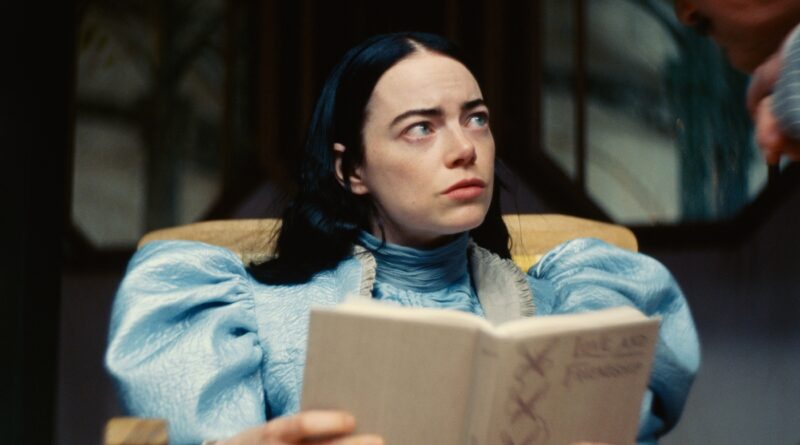“Poor Things”: A Literary Masterpiece of Satire, Science, and Feminism
Contents
Introduction:
“Poor Things,” a novel penned by Scottish author Alasdair Gray, stands as a testament to the power of literature to challenge societal norms and provoke thought. Published in 1992, this literary work weaves together elements of satire, science fiction, and feminism, creating a rich tapestry that delves into the complexities of identity, power dynamics, and the quest for autonomy. In this article, we will embark on an exploration of “Poor Things,” dissecting its narrative intricacies, thematic depth, and the lasting impact it has had on readers and critics alike.
I. Alasdair Gray: A Literary Visionary
A. Early Life and Influences
To understand “Poor Things,” we must first delve into the life of its creator, Alasdair Gray. Born in 1934 in Glasgow, Gray’s upbringing and literary influences shaped the unique perspective that would later manifest in his writing. We’ll explore the formative experiences that contributed to Gray’s development as a literary visionary.
B. Multifaceted Creativity
Gray’s talents extend beyond the realm of literature. As an accomplished artist and playwright, his multidisciplinary approach enriches the layers of complexity within “Poor Things.” We’ll discuss how Gray’s artistic vision enhances the novel’s narrative and contributes to its immersive quality.
II. Synopsis of “Poor Things”:
A. Victorian Scotland Setting
The novel is set in Victorian-era Glasgow, providing a backdrop that serves as a canvas for Gray to explore societal norms, class structures, and the impact of scientific advancements on the fabric of society. We’ll delve into the historical and cultural context that sets the stage for “Poor Things.”
B. Godwin Baxter and Bella Baxter: A Tale of Resurrection
At the heart of “Poor Things” is the intriguing relationship between Godwin Baxter, a rogue surgeon, and Bella Baxter, a woman brought back to life through a grotesque experiment. We’ll examine the ethical dilemmas posed by Godwin’s actions and the implications of Bella’s resurrection on her autonomy and agency.
III. Themes Explored:
A. Satire and Social Commentary
Gray employs satire as a powerful tool to critique societal norms, gender roles, and the influence of the ruling class. We’ll dissect the satirical elements within “Poor Things” and explore how Gray uses humor to shed light on serious social issues.
B. Feminism and Identity
Bella Baxter’s journey becomes a focal point for exploring feminist themes within the novel. We’ll discuss how “Poor Things” challenges traditional notions of femininity, agency, and independence, inviting readers to question and reevaluate established gender roles.
IV. Reception and Criticism:
A. Critical Acclaim
Upon its release, “Poor Things” received widespread acclaim for its inventive narrative, thought-provoking themes, and Gray’s masterful storytelling. We’ll delve into critical reviews, highlighting the aspects that garnered praise and established the novel as a significant contribution to contemporary literature.
B. Controversies and Debates
As with any groundbreaking work, “Poor Things” sparked debates and controversies. We’ll explore the areas of contention, addressing the novel’s reception in both literary and social contexts.
V. Legacy and Influence:
A. Literary Impact
“Poor Things” has left an enduring mark on the literary landscape, influencing subsequent generations of writers and thinkers. We’ll explore the novel’s lasting impact on literature, its inclusion in academic curricula, and its relevance in ongoing conversations about identity and societal structures.
B. Adaptations and Beyond
Beyond the written page, “Poor Things” has inspired adaptations and discussions across different artistic mediums. We’ll touch upon any film or stage adaptations, as well as the broader cultural impact of the novel.
VI. Exploring Gray’s Narrative Techniques:
A. Metafictional Elements
One of the distinctive features of “Poor Things” is Gray’s use of metafiction, where the narrative acknowledges its own fictional nature. We’ll explore how Gray employs this technique to engage readers on a deeper level, inviting them to consider the constructed nature of storytelling and its implications on the novel’s themes.
B. Narrative Voices
The novel unfolds through various narrative voices, each offering a unique perspective on the events within “Poor Things.” We’ll analyze the significance of these voices, from the unreliable narrator to the incorporation of letters and diaries, in shaping the reader’s understanding of the characters and themes.
VII. Intersections of Science and Morality:
A. Ethical Dilemmas
At its core, “Poor Things” grapples with profound ethical questions surrounding the boundaries of science and morality. We’ll delve into the moral complexities of Godwin Baxter’s experiments and the broader implications for society’s ethical compass.
B. Victorian Science and Progress
The novel is set against the backdrop of Victorian Scotland, a period marked by scientific advancements and societal shifts. We’ll explore how Gray uses this historical context to scrutinize the consequences of unchecked progress and the clash between tradition and modernity.
VIII. Contemporary Relevance:
A. Social Commentary Across Eras
Despite its Victorian setting, “Poor Things” remains remarkably relevant to contemporary discussions on societal norms, scientific ethics, and gender dynamics. We’ll examine how the novel’s themes continue to resonate in today’s world, prompting readers to reflect on enduring societal challenges.
B. Feminism in the 21st Century
The feminist themes explored in “Poor Things” echo in ongoing conversations about gender equality and autonomy. We’ll discuss how the novel’s portrayal of Bella Baxter contributes to contemporary discussions surrounding agency, independence, and the evolving landscape of feminism.
IX. The Art of Alasdair Gray:
A. Visual Accompaniments
In addition to his literary contributions, Gray’s artistic prowess is evident in the visual elements accompanying “Poor Things.” We’ll explore how Gray’s illustrations and designs enhance the reading experience, providing readers with a multi-sensory journey into the world of the novel.
B. Literary Legacy
As a writer, artist, and thinker, Alasdair Gray’s legacy extends beyond “Poor Things.” We’ll discuss how his body of work has influenced subsequent generations of creatives, contributing to a broader cultural dialogue on the intersection of art, literature, and societal critique.
Conclusion:
In the labyrinthine landscape of “Poor Things,” Alasdair Gray has crafted not just a novel but a literary masterpiece that transcends genres and defies easy categorization. Through its narrative complexity, satirical brilliance, and exploration of pressing social issues, “Poor Things” continues to captivate readers, inviting them to navigate the intricate intersections of science, morality, and identity. As we reflect on the enduring legacy of both the novel and its creator, we find ourselves immersed in a rich tapestry of ideas that challenge, provoke, and inspire—a testament to the enduring power of literature to shape our understanding of the world and ourselves.




